-
Emperor Shomu’s Wish for a Land of Peace
Visiting Kokubunji Temple, you may believe for a moment that you are in Nara, which became the first major capital city of Japan in the eighth century. The atmosphere here is so similar to that of Asukadera, one of the oldest temples in the country, that you might think you have found a Nara by the sea.
Those who are well versed in Japanese history may recognize the name “Kokubunji.” In 741, Emperor Shomu (701–756) ordered the construction of a government-sponsored temple (kokubunsoji) and nunnery (kokubunniji) in each province for the purposes of spreading Buddhism and praying for the protection of the country. Nearly 50 temples named Kokubunji remain across Japan, and most of them are designated National Historic Sites. -
-
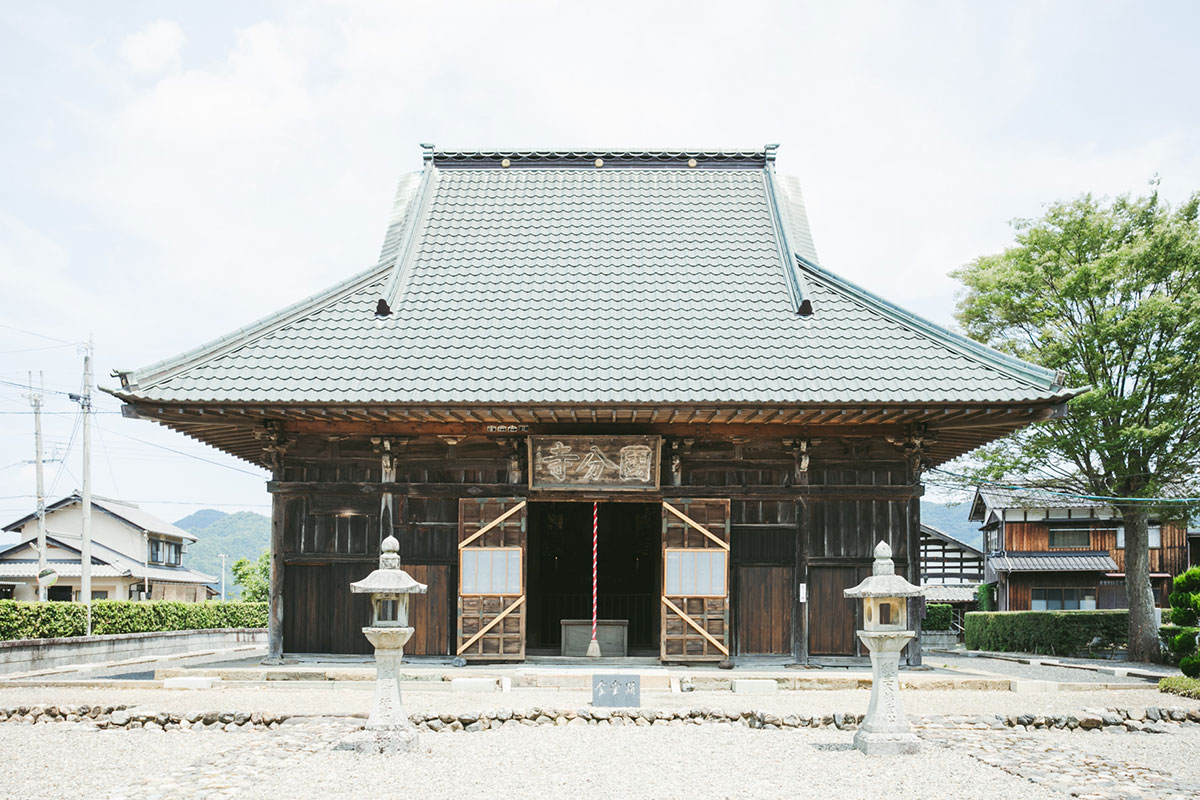 Kokubunji Temple seen from the front
Kokubunji Temple seen from the front
-
-
A Great Buddha Protected by the Townspeople, Young and Old
The kokubunsoji temple in Obama is also known as Wakasa Kokubunji. Though its history goes back much farther, the current main hall, the Shakado, was rebuilt in 1705. As you enter this simple yet commanding hall, you will find yourself before a striking wooden statue of Shakyamuni Buddha. The statue depicts the historical Buddha in a seated position and is also known as Shaka Joroku (“the Five-Meter Buddha”) in reference to the Buddha’s height if he were standing.
This statue is an example of yosegi-zukuri, a technique in which blocks of wood are first carved separately and then joined together to complete the sculpture. The left hand of the Buddha makes the mudra (symbolic gesture) of dispelling fear, with the palm facing forward and the fingers extended. The right hand is held in the mudra of blessing, with the palm facing upward, showing that the Buddha is willing to fulfill people’s wishes. These two gestures often appear together and are characteristic of Shakyamuni Buddha statues.
Seven smaller Buddhist images called kebutsu are attached to the halo behind the statue. If you look closely, you will see that each one is making a different mudra. The kebutsu are said to represent various manifestations of Shakyamuni Buddha, appearing in different forms to save all sentient beings. Similar kebutsu can be seen on the halo of the Great Buddha of Todaiji Temple in Nara.
One of the reasons the statue of Shakyamuni Buddha at Kokubunji is held in such high esteem lies in its closeness to the hearts of the townspeople who worship it. The main hall is a favorite playground for the children, and the chief abbot himself played beside the statue when he was a boy. A local children’s organization dedicated to caring for cultural properties carries out various activities at the temple, including cleaning, to foster a spirit of protection and respect for the space where the Buddha resides. -
-
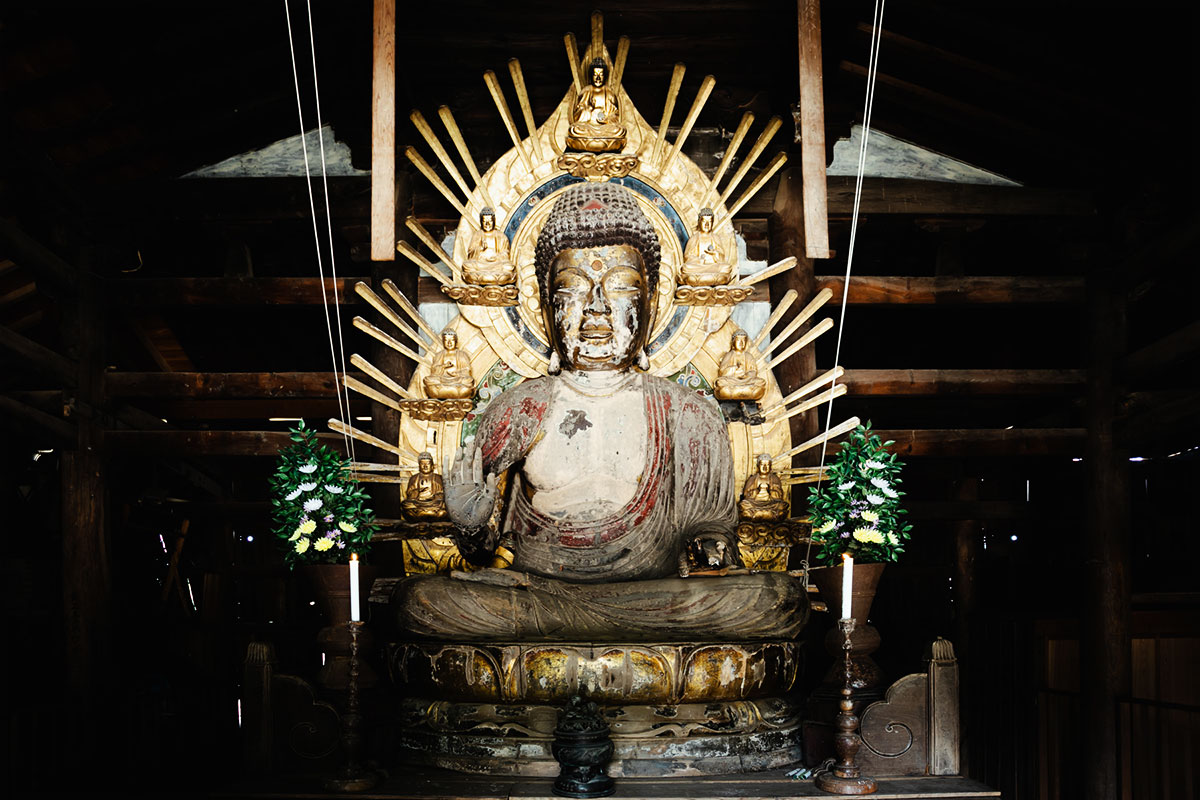 The 3-meter-high seated statue of Shakyamuni Nyorai (Shakyamuni Buddha)
The 3-meter-high seated statue of Shakyamuni Nyorai (Shakyamuni Buddha) -
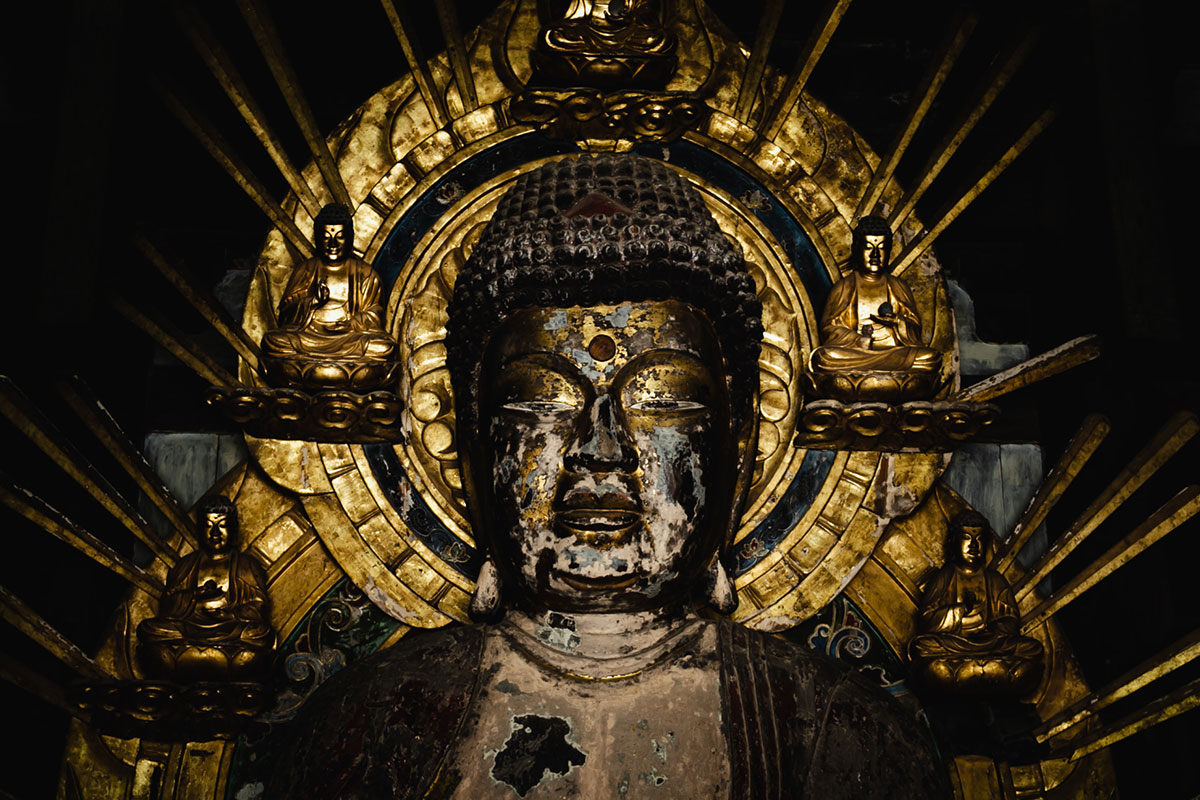 “Kebutsu" (incarnations of Buddha) surrounding the Shakyamuni Buddha
“Kebutsu" (incarnations of Buddha) surrounding the Shakyamuni Buddha
-
-
A Simple Yet Imposing Statue of Yakushi Buddha
A seated statue of Yakushi Buddha (the deity of medicine and healing) from the Kamakura period (1192–1333) is enshrined in the Yakushido Hall to the left of the Shakado. This elegant, minimalist statue exudes a subtle power that allows you to focus on the beauty of its well-balanced proportions and flowing lines without the distraction of extra ornamentation.
On either side of Yakushi Buddha are two other seated statues, also carved in the Kamakura period: Shakyamuni Buddha on the left and Amida Buddha (the Buddha of Immeasurable Light and Life) on the right. Both statues are quite impressive, and it is theorized that they may have been principal objects of worship at other temples before being moved to Kokubunji. During the period of anti-Buddhist sentiment in the Meiji era (1868–1912) known as haibutsu kishaku (“abolish Buddhism, destroy Shakyamuni”), many temples in Obama protected their statues by relocating them. It is due to the effort of the people that these precious sculptures have been preserved to be passed on to future generations. -
-
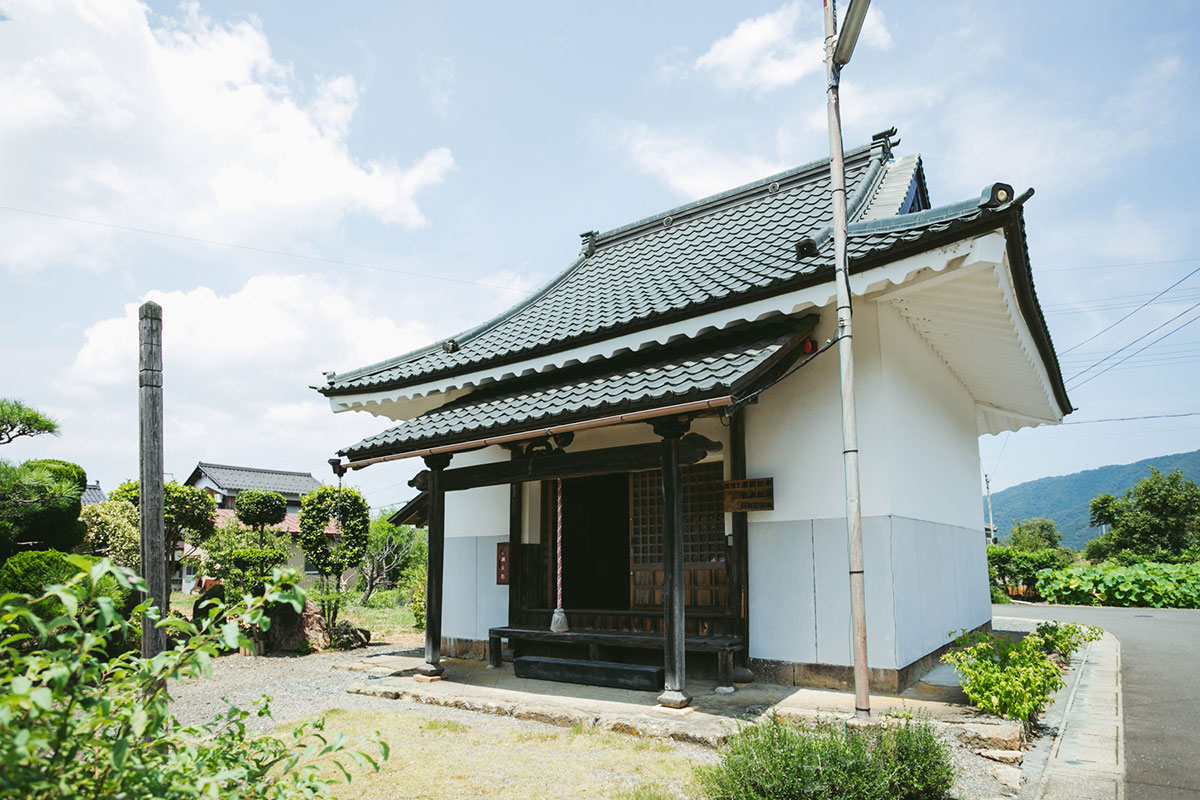 “Yakushi Hall" on the left side of Shakyamuni Hall
“Yakushi Hall" on the left side of Shakyamuni Hall -
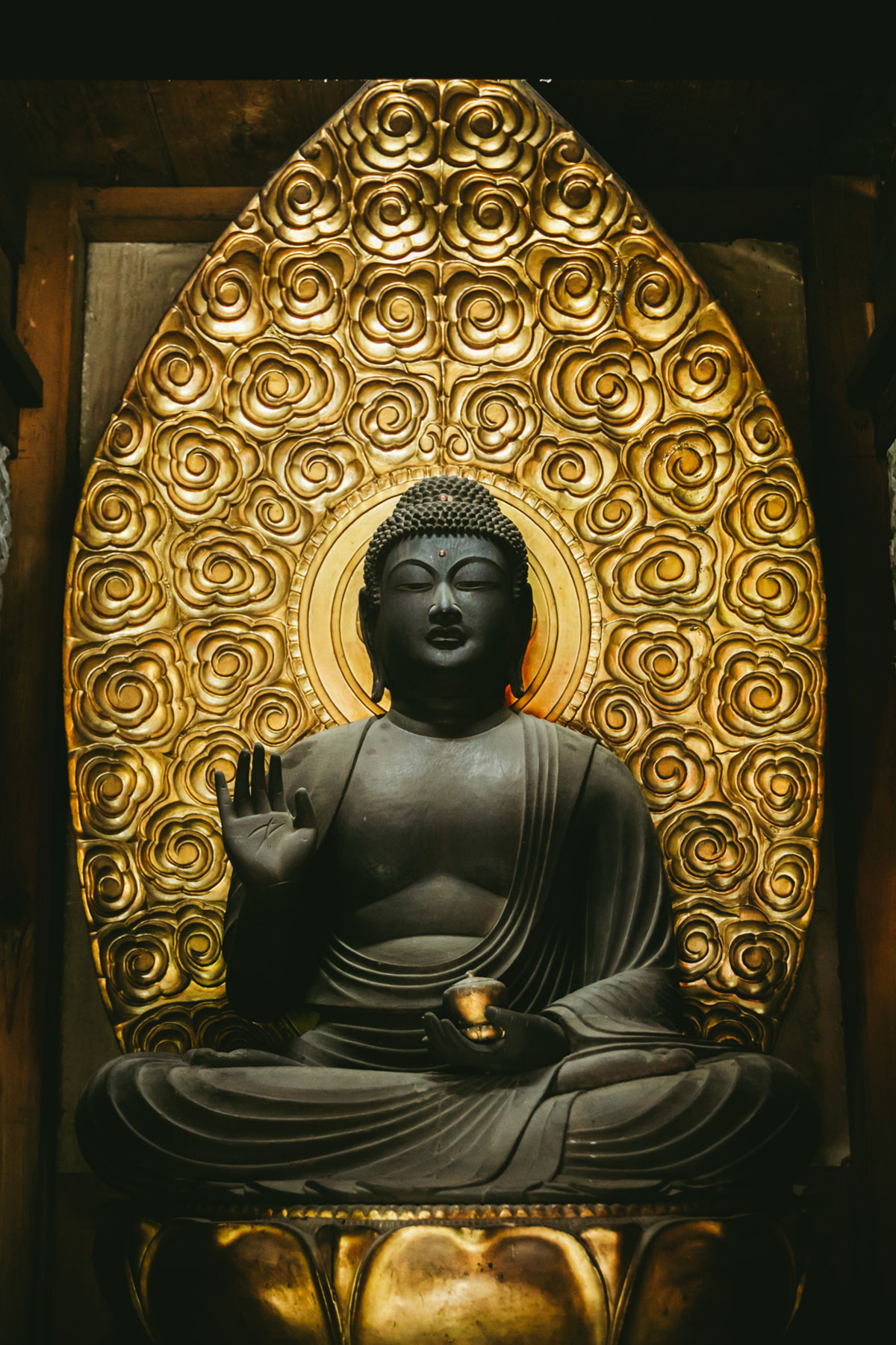 Seated Yakushi Nyorai from the Kamakura period (1185-1333)
Seated Yakushi Nyorai from the Kamakura period (1185-1333)
-
-
Historic Relics: Ancient Temple Ruins and a Large Burial Mound
On the outskirts of the current temple grounds is the excavated site of the original Wakasa Kokubunji Temple. Ruins such as foundation stones and stairs show where the former Nandaimon Gate, Chumon Gate, Kondo (Main Hall), and Kodo (Lecture Hall) were built. The location of the temple, surrounded by the Kita, Onyu, and Matsunaga Rivers, also suggests that it was considered a very important place. The remains of the original Kokubunji Temple are a designated National Historic Site.
The small Wakasahime Jinja Shrine adjacent to the ruins is built atop an ancient burial mound (kofun) that was originally constructed in the sixth century. With a diameter of about 50 meters, it is quite large for a round tumulus. Throughout Japan, there are very few examples of a kokubunji temple located beside a burial mound in this way. Why was Wakasahime Shrine founded here? Why is there a kofun so close to the temple? Exploring the site provides plenty of mysteries to muse upon.
Walking along the perimeter of the Shakado Hall, you will come upon a small pond filled with lotuses that bloom in summer. The sight of these gorgeous flowers, long associated with Buddhism and representing purity, will make you feel as if you have entered the world of the Buddha. Even after you have left the statues behind, the connection with history will linger. -
-
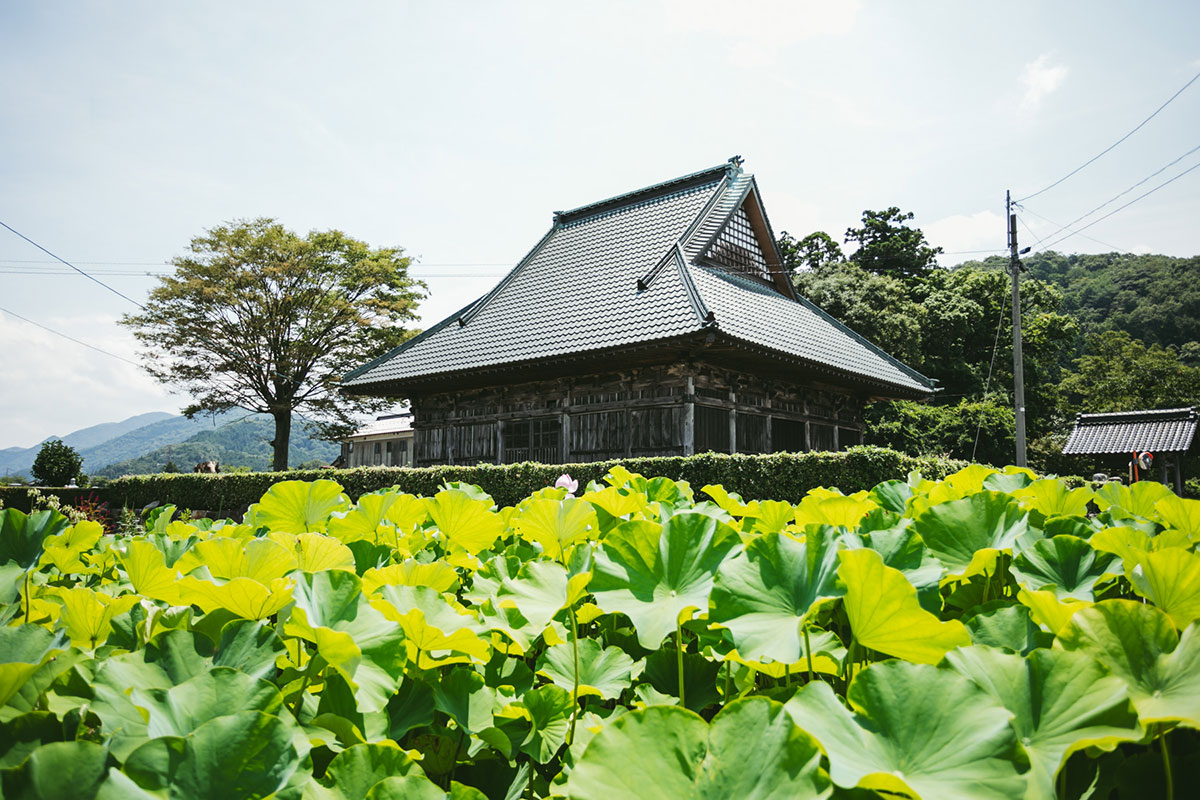 Kokubunji Temple seen from a field of lotuses
Kokubunji Temple seen from a field of lotuses
-
